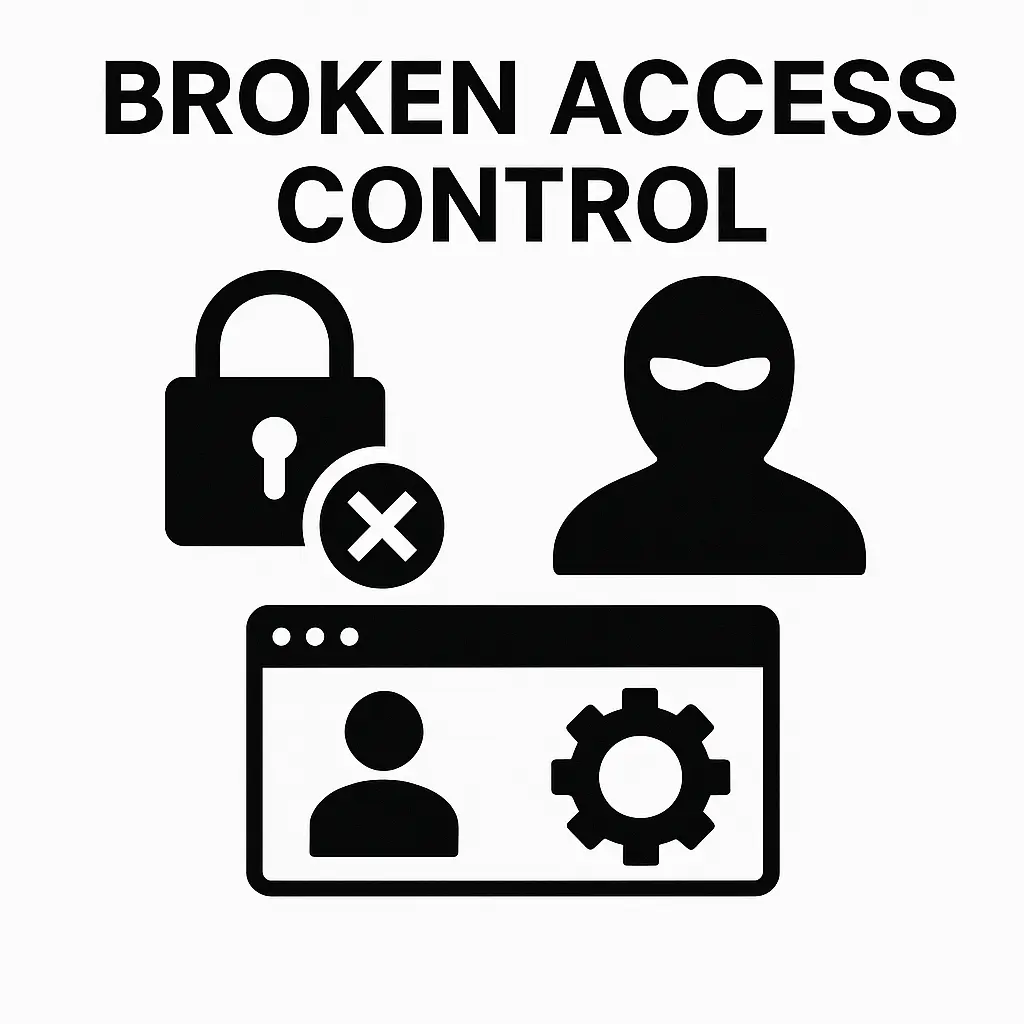
Broken access control is a vulnerability where an application fails to enforce user permissions, allowing unauthorized actions or data access. This occurs when the backend logic doesn't reliably check a user's identity and privileges before granting access to resources. Attackers can exploit this to perform tasks like viewing, modifying, or deleting information that should be restricted, escalating from read access to full administrative control. The core issue lies in trust boundaries: if access checks occur only on the client side or if permissions are misconfigured, attackers can bypass them by manipulating URLs, parameters, or API calls.
Real-world cases span many sectors, from e-commerce and social media to financial services. A common pattern is an insecure direct object reference (IDOR), where an attacker changes a parameter such as an account or order ID to access data that belongs to another user.
Another example is exposed admin interfaces or endpoints that accept requests from unauthenticated or improperly authenticated users. In cloud environments, misconfigured access control lists or overly permissive roles can grant broad access to objects like storage buckets or management consoles. These incidents often arise from rapid feature changes, complex multi-tenant architectures, or insufficient testing of permission boundaries. The consequences can range from data leakage and privacy breaches to service outages and regulatory penalties.
Defending against broken access control requires robust, server-side authorization checks, least-privilege policies, and continuous monitoring of access attempts across all layers of the stack.
Broken access control means the system doesn’t properly stop people from doing things they’re not allowed to do. If these checks fail, someone could view private records, change other users’ data, or even take over an account or the whole app. When security teams miss these controls, organizations can suffer data leaks, financial losses, fines, and damage to customers’ trust.
In security testing, testers look for gaps where someone could bypass the rules for a specific item or action. Finding these gaps shows how an attacker might gain more access inside the system, moving to other users’ areas or taking control of higher‑level features.
Consequences extend beyond data leaks. Unauthorized access can enable fraud, disruption, and manipulation of permissions, which may undermine audit trails and accountability. For organizations, the cost includes incident response, remediation, and potential fines under privacy laws. In development environments, leaked test data or misconfigured roles can escalate to code execution or access to sensitive APIs, turning a low risk flaw into a high severity breach with ripple effects across the supply chain.
Mitigation starts with access controls and least privilege by default. Implement server side authorization at every access point, and use role based or attribute based access control. Avoid relying on client side checks. Regularly test for broken access control with targeted test cases, automation, and monitoring.
Maintain session integrity, track permission changes, and apply deny by default policies. Combine code reviews, risk based testing, and OWASP guidance to reduce the attack surface. Continuous verification and periodic reauthorization reviews sustain protection against evolving threats globally. Today and always.